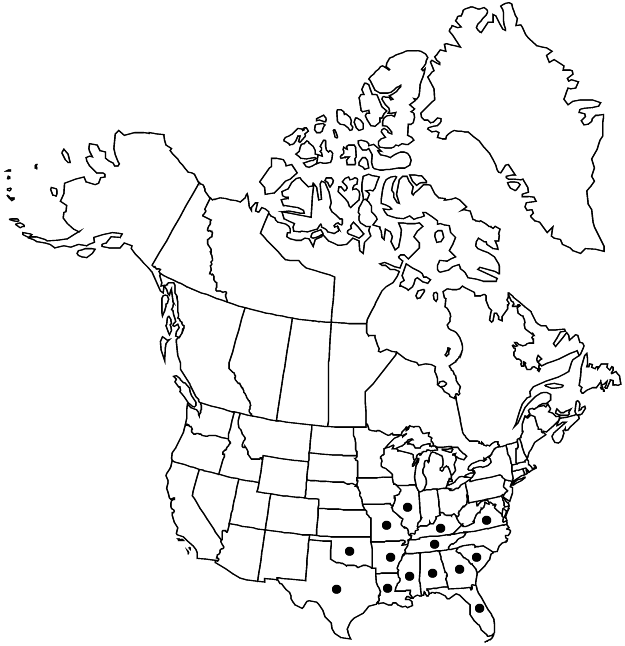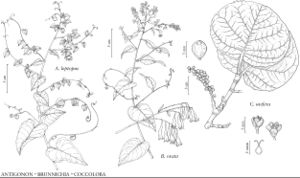Brunnichia ovata
Sida 3: 115. 1967.
Stems running on/in soil or water, rooting at nodes, younger ones climbing by tendrils, branched, terete, to 13 m, larger ones to 2 cm diam., soft-woody. Leaves: ocrea obscure, (0.1–)0.5–1 mm, usually fringed with reddish brown hairs; petiole dilated at base, 7–25 mm, glabrous or pubescent; blade 3–15 × 1.5–8 cm, base truncate to subcordate to broadly cuneate, apex acute to acuminate, glabrous or slightly pubescent abaxially, glabrous adaxially. Inflorescences 5–26 cm; peduncle (0.1–)5–35 mm. Pedicels jointed proximal to middle, 0.5–1 cm. Flowers: tepals linear-oblong to oblong, margins entire, apex acute; stamens prominently exserted. Achenes 8–10 × 3–5 mm, subglossy. 2n = 48.
Phenology: Flowering Jun–Jul.
Habitat: Riverbanks, margins of lakes, edges of wet woods and thickets
Elevation: 0-200 m
Distribution

Ala., Ark., Fla., Ga., Ill., Ky., La., Miss., Mo., Okla., S.C., Tenn., Tex., Va.
Discussion
There has been some question regarding the valid name of this species, whether Brunnichia ovata or B. cirrhosa. The problem stems from the almost simultaneous publication of Rajania ovata Swartz (Dioscoreaceae) and R. ovata (Polygonaceae), the basionym of the now-accepted name of the only North American species of Brunnichia. The best evidence indicates that the Walter name was published between April and June 1788, while W. T. Stern (1980) put the date of publication of the Swartz name between 20 June and 31 July 1788, but suggested that July 1788 be accepted as the month of publication. Under that interpretation, the Swartz name is a later homonym, and the epithet of the Walter name is the earliest available for this species.
The most often used English common name for Brunnichia ovata alludes to the fruit’s resemblance to an ear pendant. Fruits often persist on these interesting ornamentals until the following spring.
Selected References
None.
